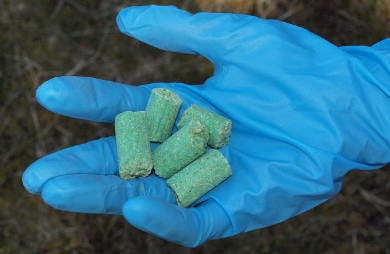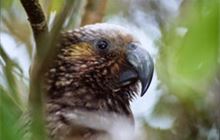What is 1080
Introduction
1080 is the common name for a biodegradable bait pellet DOC and other organisations use to control rats, stoats and possums.Although we call it 1080, the toxic ingredient in the bait is sodium fluoroacetate.
Fluoroacetate is a naturally occurring toxin that is found in several poisonous plants around the world and provides some defence against mammals. 1080 bait contains a synthetic salt form of this toxin.
Sodium fluoroacetate is poisonous to mammals, which is why it’s an effective toxin for predator control in Aotearoa New Zealand.
What's in 1080 bait pellets

1080 cereal bait pellets
Image: Herb Christophers | DOC
These biodegradable bait pellets are designed to attract rats and possums and deter native species. The pellets also control stoats that eat the carcasses of poisoned rats.
The bait pellets are made up of:
- sodium fluoroacetate (0.15% of each pellet)
- cereal
- sugar
- cinnamon flavour (to attract predators)
- green dye (to deter birds).
1080 is biodegradable
1080 bait is broken down naturally in the environment by micro-organisms, fungi and plants into harmless materials. It doesn't leave permanent residues in soil, water, plants or animals.
Visit Why we use to 1080 to learn more about how bait pellets break down in the environment.
Did you know?
In 1944, the U.S. Fish and Wildlife Service gave fluoroacetate the nickname "1080" because that was its laboratory catalogue number.
For more information, read our 1080 as a tool for predator control FAQ (PDF, 1,369K)




